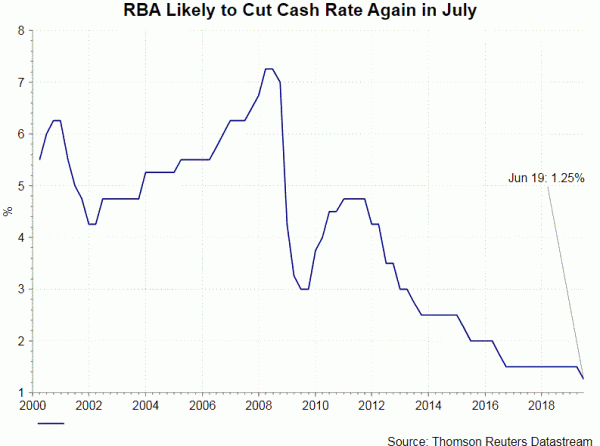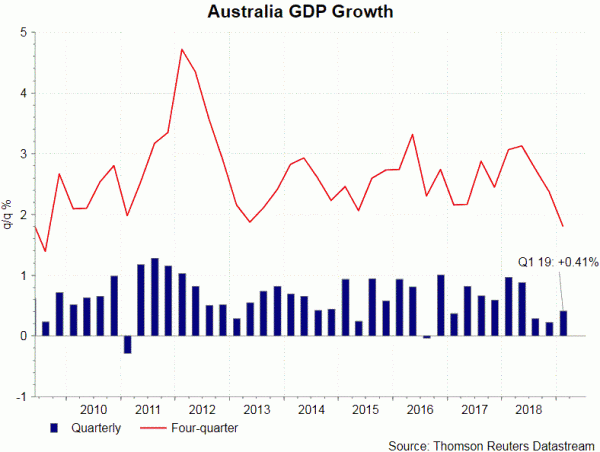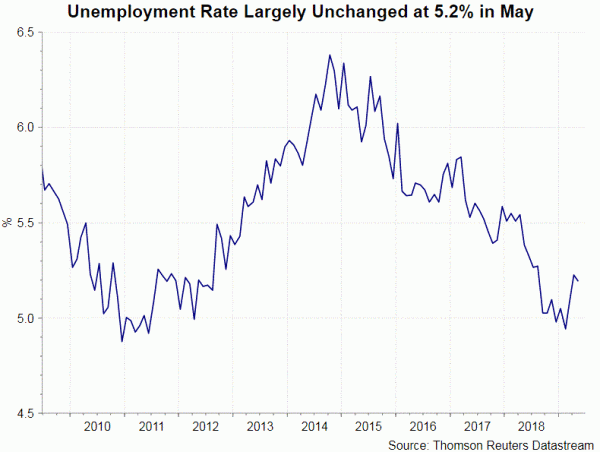We expect to RBA to cut the cash rate, by -25 bps, to 1% in July. Although this would be earlier than RBA’s projection in the May SoMP, it is largely in line with market expectations, which has priced in about 70% of a rate cut in July. We believe a rate cut this week is appropriate due to two key reasons. First, the incoming data flow since the rate cut in June has remained soft. The close-watched unemployment rate missed consensus. Second, Governor Phil Lowe recent speech has been rather dovish. He noted that there is “a fair degree” of spare capacity in the economy. He added that fiscal stimulus is needed to accompany monetary easing, in order to achieve desired effect to the economy.
Real GDP expanded at an annualized rate of +0.4% q/q in 1Q19, improving from +0.2% in the prior quarter but missing consensus of +0.5%. On the job market, the May report shows strong payroll growth of +42.3K, compared with consensus of a +17.5K addition. However, the unemployment rate stayed unchanged at 5.2%, compared with consensus of 5.1%. This was mainly driven by the increase in participation rate to a record high of 66%. The report reveals that the momentum of job growth has remained strong. However, the spare capacity in the market is larger than expected. At the June meeting, the RBA revised lowered its expectation on the non-accelerating inflation rate of unemployment (NAIRU) to 4.5%- the level that can push to inflation to the 2-3% target – from 5% previously. This signals that more rate cuts are likely required to bring the unemployment rate to around that level.
RBA has recently been preparing the market for a renewed easing cycle. At the June meeting minutes released on June 18, it was noted that “Given the amount of spare capacity in the labour market and the economy more broadly, members agreed that it was more likely than not that a further easing in monetary policy would be appropriate in the period ahead”. Last week, Governor Phil Lowe suggested at a panel discussion in Canberra that “most indicators suggest that there is still a fair degree of spare capacity in the economy”. Given the policy rate has been lowered to historically low levels, it is understandable that further rate cut could not have much impact. As Lowe noted that “fiscal policy, including through spending on infrastructure” and “structural policies that support firms expanding, investing, innovating and employing people” should be implemented together with further rate cuts.















